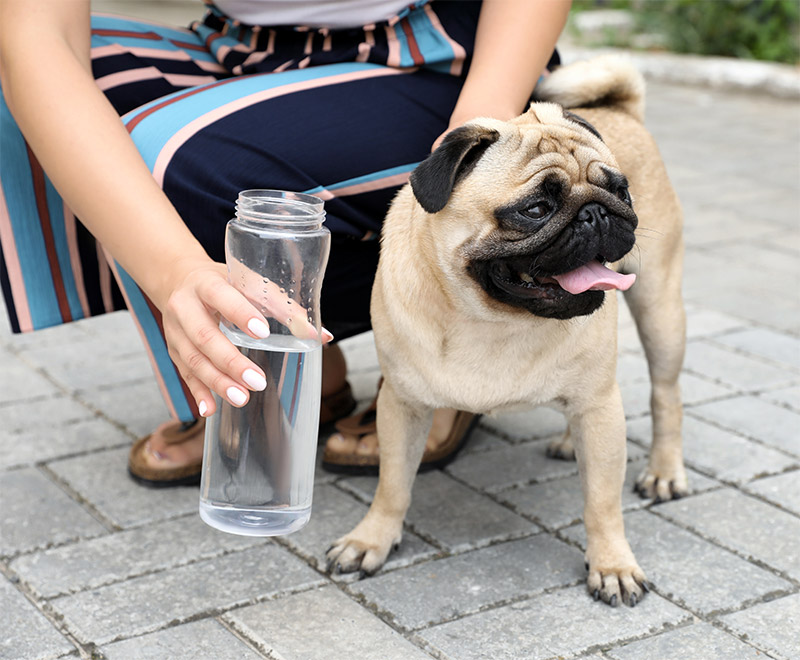
How to Tell if Your Pet is Overheated – and What to Do About It
As the scorching summer months engulf Escondido, CA, pet parents must step up their game to ensure the well-being and happiness of their beloved companions. Just like humans, our furry friends are susceptible to the dangers of overheating, which can have severe consequences on their health. In this blog, we’ll delve into what overheating means for pets, how it can impact their health, and most importantly, how we can aid our pets when they find themselves in such a situation. So, let’s learn how to recognize the signs and take prompt action to keep our four-legged family members safe during the hot season.
Understanding Overheating in Pets
Overheating occurs when a pet’s body temperature rises beyond their normal range, putting them at risk of heatstroke or heat exhaustion. Dogs and cats, in particular, are more susceptible to overheating as they cannot regulate their body temperature as efficiently as humans do. On hot days, pets can quickly become overwhelmed by the heat, especially when they are exposed to direct sunlight or confined in areas with inadequate ventilation.


Recognizing Signs of Overheating
As vigilant pet parents, it’s crucial to be attentive to signs of overheating in our furry companions. Common symptoms include:
- Excessive Panting: Pets cool themselves down by panting, but excessive and rapid panting can indicate overheating.
- Drooling: Unusually heavy drooling may be a sign that your pet is trying to cool down.
- Lethargy: Overheated pets may appear weak, tired, or unsteady on their feet.
- Bright Red Tongue and Gums: If your pet's tongue and gums are visibly red, it could indicate heat stress.
- Vomiting or Diarrhea: Overheating may lead to gastrointestinal distress.
- Collapse or Seizures: In severe cases, overheated pets may collapse or experience seizures.
What to Do When Your Pet is Overheated
If you suspect that your pet is overheated, follow these immediate steps:
1. Move to a Cool Area: Bring your pet to a shaded or air-conditioned space immediately.
2. Offer Water: Provide cool, fresh water for your pet to drink. You may also use a damp cloth to gently cool them down.
3. Avoid Ice-Cold Water: While it may seem logical to give your pet ice-cold water, it can cause shock. Stick to cool, not freezing, water.
4. Use Fans or Wet Towels: You can use fans or wet towels to help lower your pet’s body temperature.
5. Do Not Submerge in Cold Water: Avoid immersing your pet in cold water, as it can lead to shock.
6. Contact the Veterinarian: If your pet’s condition doesn’t improve or worsens, seek immediate veterinary attention.


When to Call the Vet
In some cases, overheating can lead to heatstroke, a potentially life-threatening condition. You should call the vet if:
- Your pet's body temperature exceeds 104°F (40°C).
- The symptoms of overheating persist despite your attempts to cool them down.
- Your pet is showing signs of distress, such as difficulty breathing or disorientation.
- Your pet has collapsed or is experiencing seizures.
Compassionate Care in Escondido, CA - Book an Appointment Today!
At CAHRC, we understand the importance of your pet’s health and well-being, especially during the hot summer months. Our team of experienced and compassionate veterinarians is dedicated to providing comprehensive care for your furry companions. From preventive measures to urgent medical attention, we are here to support you and your pets.
As the sun beats down on Escondido, CA, let’s prioritize the health and happiness of our beloved pets. Overheating can be a serious threat to their well-being, but armed with knowledge and quick action, we can make a significant difference. Book an appointment for your pets at Companion Animal Health & Rehab Center today. Our experienced vets will ensure your furry friends stay healthy and happy all year round.







